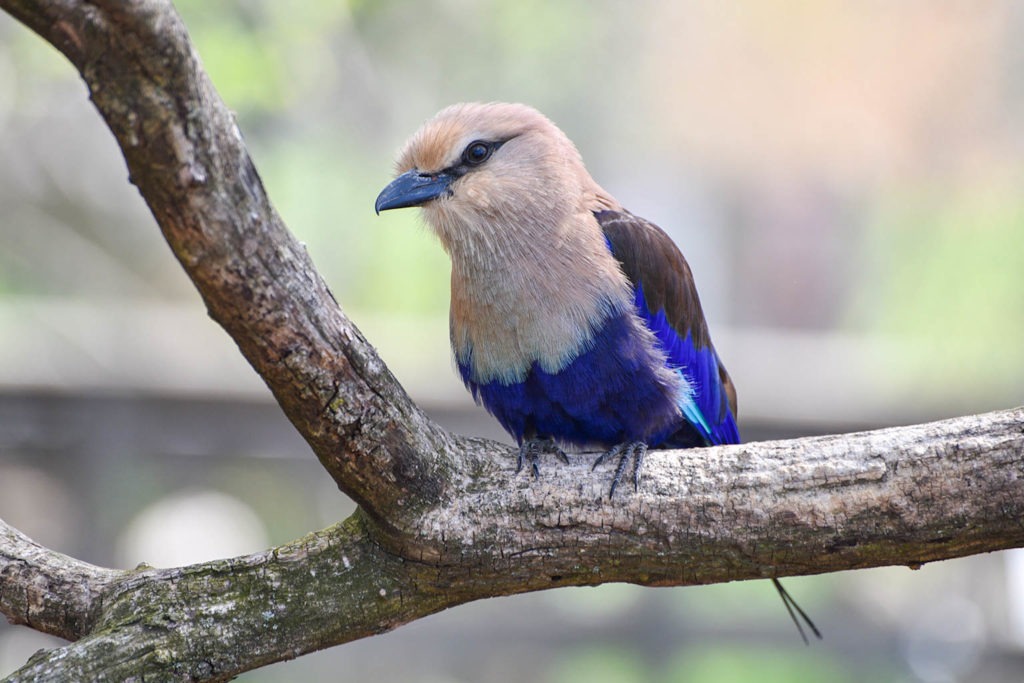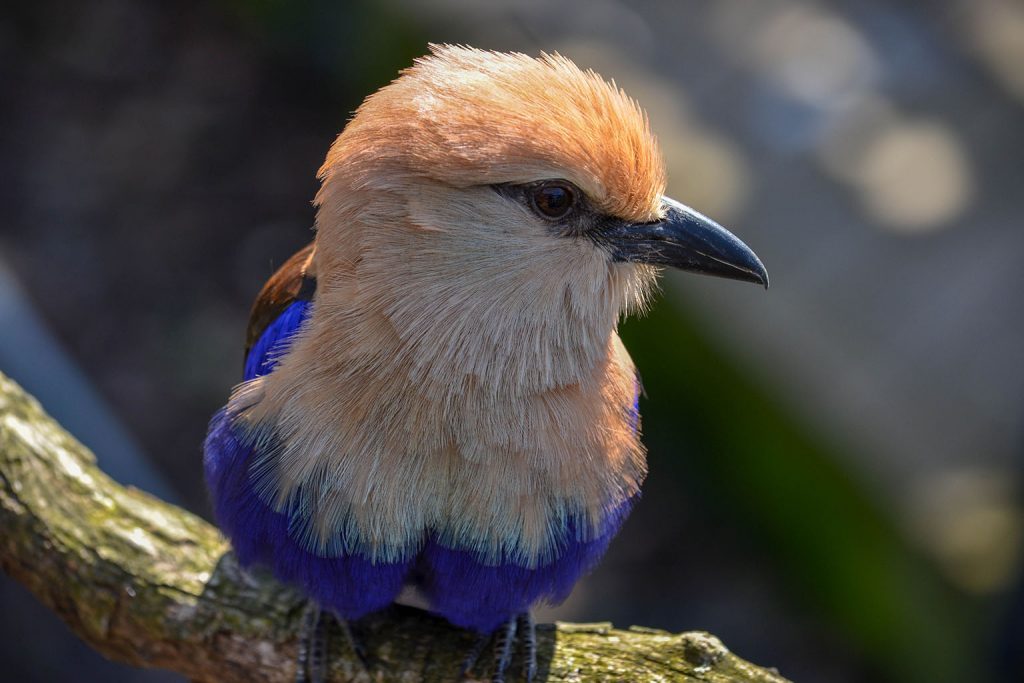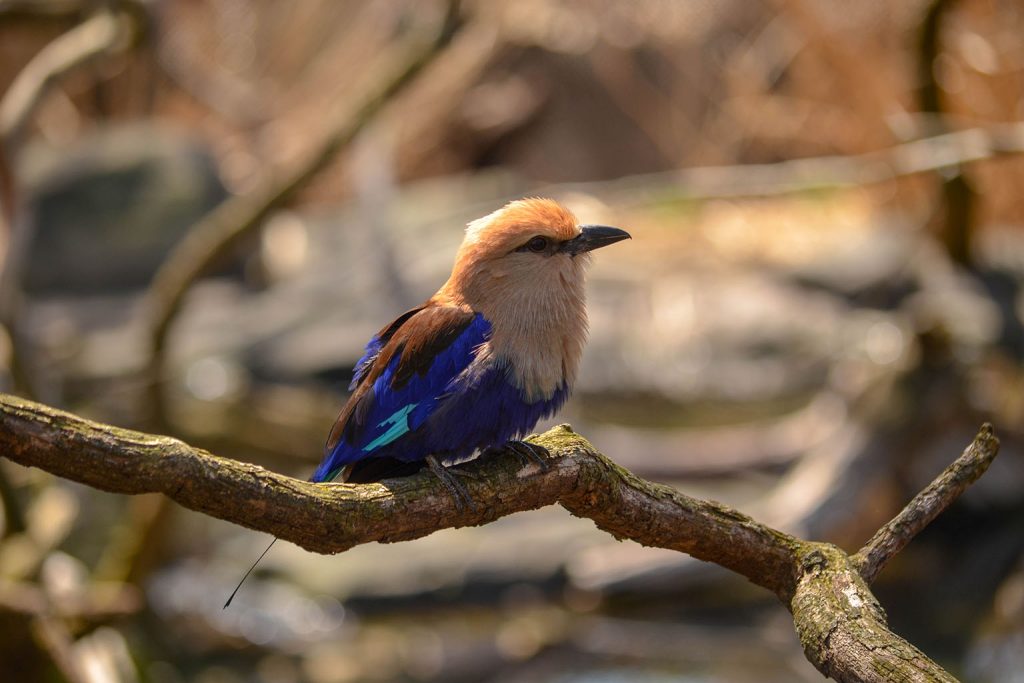Overview
“Where I live”
Blue-bellied rollers are native to western and central Africa, from Senegal to southern Sudan. They live in wooded areas often on the edge of open or recently burned areas.
You can see blue-bellied rollers at The Maryland Zoo in the African Aviary along the African Journey boardwalk.
“How I live there”
Blue-bellied rollers are social birds that typically gather in small groups of 3 to 7, sometimes more. They exhibit many social behaviors, including calling to each other, chasing each other, flying together, and defending territory together. They have an interesting hunting style: they sit high in trees – about 30 feet up – and dive-bomb prey on the ground. They plummet toward the ground to snatch up prey, then return to the treetops. They also flock to the scene of forest and brush fires and feed on insects fleeing flames.
“Making my mark”
Blue-bellied rollers are sturdy, pigeon-sized birds with heavy black bills and beautiful, distinctive blue, black, pinkish-cream, and teal coloration.
“What eats me”
Mature blue-bellied rollers do not worry much about predation because they are agile flyers and can escape most predators with relative ease. Eggs and nestlings are much more vulnerable.
Raising Young
During courtship, male and female blue-bellied rollers chase each other in flight, rolling through the sky and calling loudly to each other. Details on breeding and nesting behavior are somewhat sketchy, so it is not entirely clear when and how males invest their parenting time. Reportedly, blue-bellied rollers are mostly monogamous but sometimes polygamous, which means that sometimes a male will choose to breed with more than one female. Females nest in tree holes, and particularly in hollow palm trees. They lay clutches of 2 to 3 eggs, and there is evidence that both males and females spend time incubating the eggs, although females spend more time on the nest than males. Whether or not males who breed with multiple females spend time incubating one or more clutches of eggs is unclear. Incubation lasts 22 to 24 days. While nesting, blue-bellied rollers are very territorial and will attack any other bird that attempts to approach. Parent birds will care for nestlings for about a month after hatching, and the baby birds will fledge in four weeks time.
Conservation
Blue-bellied rollers are well-established across a wide range in Africa and are in no current danger of extinction. Although their overall population may be declining, they are considered a species of least concern by the IUCN, the world’s leading conservation organization.
Taxonomy
- Kingdom: Animalia
- Phylum: Chordata
- Subphylum: Vertebrata
- Class: Aves
- Order: Coraciiformes
- Family: Coraciidae
- Genera: Coracias
- Species: cyanogaster




